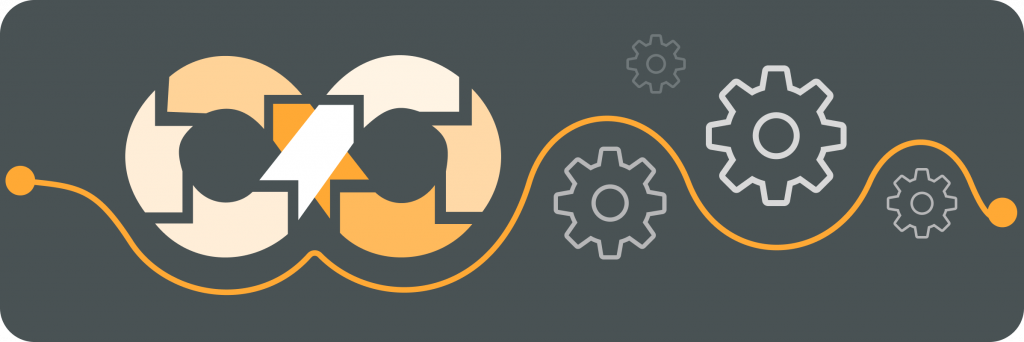Git is a distributed version control system that plays a crucial role in the DevOps methodology. It provides a platform for managing and tracking changes made to source code files, allowing multiple developers to work on a project simultaneously. Git offers a wide range of features that contribute to efficient collaboration, seamless integration, and streamlined development processes in a DevOps environment.
Understanding the Basics of Git
In order to comprehend the significance of Git in DevOps, it is essential to have a clear understanding of its fundamental concepts and principles.
Git is not just a version control system; it is a distributed version control system. This means that every developer working on a project has a complete copy of the repository on their local machine. This distributed nature of Git allows for greater flexibility and independence in development workflows.
Defining Git
Git is a powerful and widely used version control system designed to track changes in files and directories. It was created by Linus Torvalds, the creator of Linux, and has become an essential tool for software development teams.
One of the key features of Git is its branching model. Branching in Git allows developers to work on new features or bug fixes in isolation, without affecting the main codebase. This promotes a more organized and efficient development process.
The Importance of Git in Software Development
Git revolutionized the way software development is managed and has become an integral part of the DevOps workflow. It offers numerous advantages, such as efficient collaboration, code versioning, and easy integration, which significantly enhance the productivity and success of software development projects.
Furthermore, Git’s ability to handle large repositories with speed and efficiency makes it the go-to choice for projects of all sizes. Its robust architecture and extensive documentation make it a reliable tool for managing codebases and collaborating with team members across different locations and time zones.
The Role of Git in DevOps
Git plays a vital role in DevOps practices, contributing to smooth and efficient development and deployment processes. It offers several benefits that align with the core principles of DevOps.
When we delve deeper into the realm of version control systems, Git emerges as a standout player. Its distributed nature empowers developers to work offline, commit changes locally, and collaborate seamlessly across geographically dispersed teams. This decentralized approach not only enhances productivity but also provides a safety net in case of network failures or disruptions.
Git for Collaboration and Version Control
Collaboration is a fundamental aspect of DevOps, and Git excels in enabling seamless collaboration among developers. With Git, multiple team members can work on the same project simultaneously without conflicts or versioning issues. It allows developers to track changes, review modifications, and revert to previous versions when necessary.
Moreover, Git’s branching and merging capabilities foster a culture of experimentation and innovation within development teams. Developers can create feature branches to work on new functionalities independently, test them in isolation, and merge them back into the main codebase with ease. This not only streamlines the development process but also encourages iterative improvements and rapid feedback loops.
Git for Continuous Integration and Deployment
Continuous Integration (CI) and Continuous Deployment (CD) are essential practices in DevOps. Git facilitates the integration of code changes from different developers, ensuring a smooth and automated deployment process. It enables developers to merge their changes into a central repository, triggering automated build and deployment pipelines, thus reducing the risk of errors and ensuring a consistent and reliable software delivery process.
Furthermore, Git’s integration with popular CI/CD tools like Jenkins, Travis CI, and GitLab CI/CD amplifies its impact on the software development lifecycle. This seamless integration automates the testing, building, and deployment phases, fostering a culture of agility and efficiency. By harnessing the power of Git in conjunction with robust CI/CD pipelines, organizations can accelerate their release cycles, enhance product quality, and respond swiftly to market demands.
Key Features of Git in DevOps
Git offers several key features that make it a powerful tool for DevOps teams.
When delving into the world of Git in DevOps, it’s essential to understand the intricacies of its features beyond the surface level. Let’s explore a couple more aspects that contribute to Git’s significance in modern software development.
Branching and Merging
Branching and merging are core features of Git that allow developers to work on different versions of the code simultaneously. Git’s branching model allows for the isolation of new features or bug fixes, which can then be merged back into the main codebase, ensuring a controlled and organized development process.
Furthermore, Git’s branching and merging capabilities facilitate parallel development efforts within a team. Developers can create separate branches for specific tasks, experiment with new ideas without affecting the main codebase, and merge changes seamlessly when ready. This streamlined workflow promotes collaboration and accelerates the development cycle.
Staging Area
The staging area, also known as the index, is a unique feature of Git that allows developers to selectively stage changes before committing them. This enables developers to review and organize their modifications, ensuring that only relevant changes are included in the commit and enhancing code quality.
Moreover, the staging area serves as a valuable tool for crafting clean and concise commits. By carefully selecting which changes to stage, developers can create granular and focused commits that improve code readability and maintainability. This practice not only aids in tracking changes effectively but also simplifies the process of reverting or cherry-picking specific modifications.
Distributed Development
One of the key advantages of Git is its distributed nature. Each developer has a full copy of the repository, including the complete history of changes. This decentralization allows for greater flexibility, offline work, and seamless collaboration, even in geographically dispersed teams.
Furthermore, Git’s distributed architecture enhances resilience and scalability in development workflows. Developers can work independently on their local repositories, making progress without being dependent on a central server. This autonomy not only boosts productivity by eliminating network latency but also mitigates risks associated with server failures or connectivity issues, ensuring continuous progress in the development process.
Advantages of Using Git in DevOps
Implementing Git in a DevOps environment brings numerous benefits that significantly improve the overall efficiency and success of software development projects.
Git, being a distributed version control system, not only enhances the efficiency of software development projects but also provides a robust platform for code management and collaboration. Its decentralized nature allows developers to work offline, commit changes locally, and later synchronize with the central repository, ensuring continuous productivity even in the absence of a network connection.
Improved Team Collaboration
Git provides a platform for seamless collaboration among team members, regardless of their geographical location. It enables developers to work on the same codebase simultaneously, avoiding conflicts and promoting efficient teamwork.
Moreover, Git’s branching and merging capabilities play a crucial role in enhancing team collaboration. Developers can create feature branches to work on specific tasks or fixes independently, ensuring that the main codebase remains stable. Once the changes are tested and approved, they can be merged back into the main branch, streamlining the development process and minimizing disruptions.
Efficient Project Management
Git’s version control capabilities allow for efficient project management in a DevOps environment. It enables developers and project managers to track changes, assign tasks, and monitor progress, ensuring transparency, accountability, and timely delivery.
Furthermore, Git integrates seamlessly with various project management tools and issue tracking systems, providing a centralized platform for managing tasks, tracking bugs, and organizing sprints. This integration streamlines the project management process, allowing teams to focus on delivering high-quality software within the stipulated timelines.
Enhanced Code Quality
By facilitating code versioning and allowing for easy collaboration, Git promotes best practices in software development. It empowers developers to experiment, try out new ideas, and revert changes when necessary, leading to improved code quality and reduced development time.
Additionally, Git’s support for code reviews and pull requests fosters a culture of code quality and knowledge sharing within the team. Developers can review each other’s code, provide feedback, and suggest improvements, ensuring that the codebase adheres to coding standards and best practices. This collaborative approach not only enhances the overall quality of the code but also promotes continuous learning and skill development among team members.
How to Implement Git in a DevOps Environment
Implementing Git in a DevOps environment involves a series of steps to ensure a smooth integration and efficient workflow.
Git, a distributed version control system, plays a pivotal role in modern software development practices, especially in the realm of DevOps. Its ability to track changes, facilitate collaboration, and enable seamless integration with various tools makes it a preferred choice for many development teams.
Setting Up Git
The first step is to set up Git on the development machines and servers. This involves installing Git, configuring user credentials, and initializing the repository.
Installing Git is a straightforward process, with many operating systems offering package managers for easy installation. Configuring user credentials is essential for tracking the authorship of changes and ensuring accountability within the development team. Initializing the repository creates a starting point for version control, allowing developers to begin tracking changes and collaborating effectively.
Best Practices for Using Git in DevOps
Adhering to best practices is crucial for maximizing the benefits of Git in a DevOps environment. Some recommended practices include using feature branches, frequent commits, code reviews, and enforcing access control to the repository.
Feature branches provide a structured approach to development, allowing teams to work on new features or bug fixes without disrupting the main codebase. Frequent commits help maintain a detailed history of changes, making it easier to track progress and identify issues. Code reviews promote collaboration and ensure code quality by allowing team members to provide feedback and catch errors early in the development process. Enforcing access control helps protect sensitive code and ensures that only authorized personnel can make changes to the repository.




